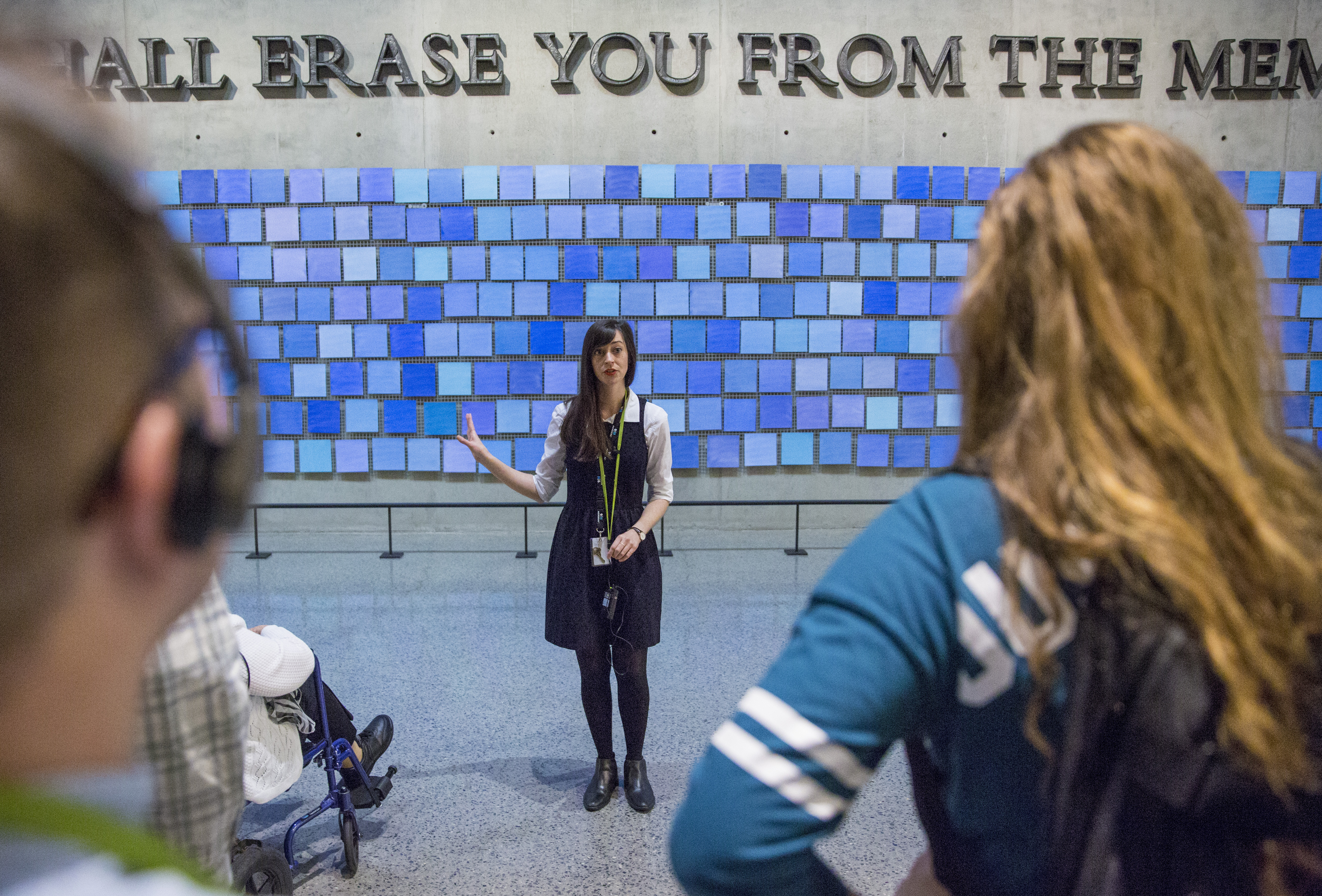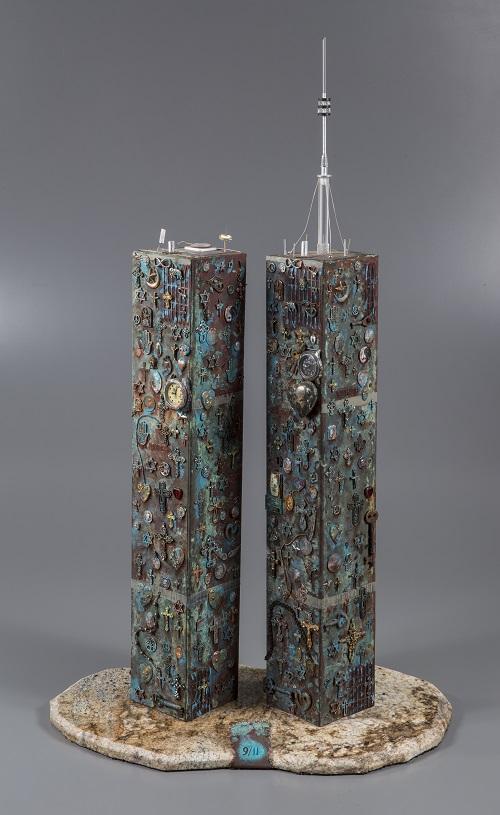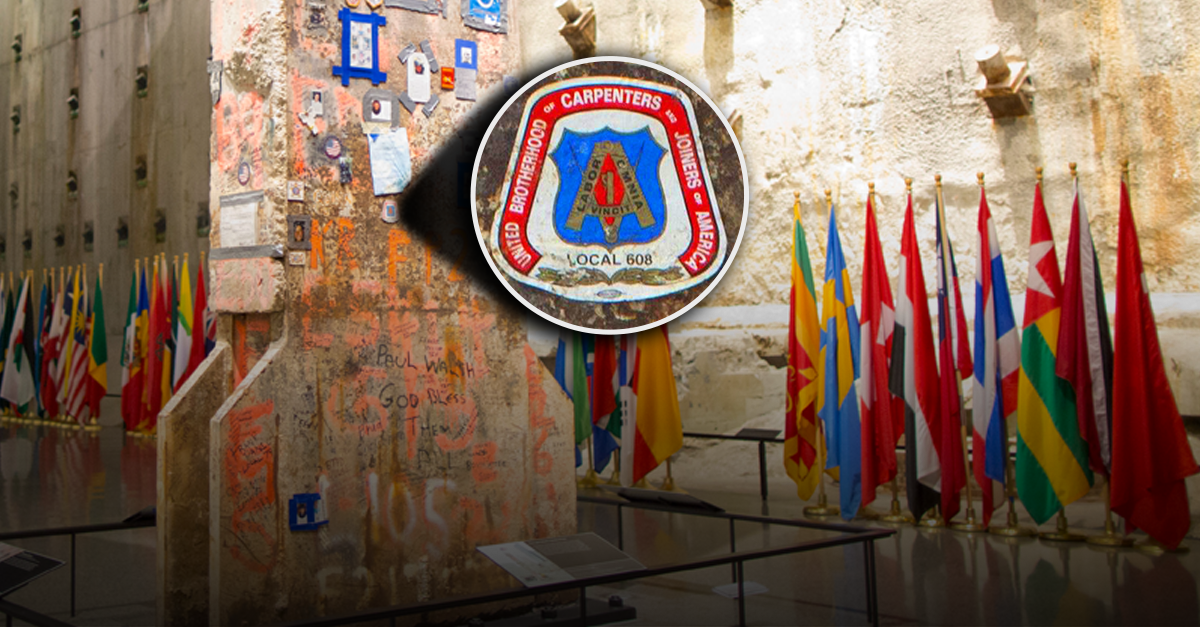More than 500K Have Participated in 9/11 Memorial Museum Tours

This week, the 9/11 Memorial Museum welcomed its 500,000th tour participant. This milestone was reached just three years after the Museum’s opening.
Hurricane Katrina Survivor Donates Artwork to 9/11 Memorial Museum

On the 12th anniversary of Hurricane Katrina, we share a story of remembrance and resiliency that emerged from New Orleans’ recovery, and our thoughts are with the citizens of Houston as they grapple with the catastrophic Hurricane Harvey.
Michael Cooper was living in New Orleans in late August 2005 when Hurricane Katrina made landfall, devastating the city and surrounding region and flooding his own home on the Bayou. At the time, Cooper, a New Orleans native, was working as a freelance jeweler and set designer for local theater companies. Cooper was stranded on his roof for three days before the Federal Emergency Management Agency came to his aid.
Submerged in rain water in his home studio was a sculpture he had been working on intermittently since 2003, intended to commemorate the nearly 3,000 lives lost in the 9/11 terrorist attacks. The work-in-progress took the form of a copper representation of the Twin Towers covered in in a miscellany of peace-related, religious and pagan symbology – from Christian crosses, Celtic crosses and crucifixes to Judaic Stars of David, the Star and Crescent symbol representative of Islam, to Ohm symbols, Hamsa hands and Egyptian Eyes of Horus. However, when Cooper retrieved the sculpture, he decided to put the project’s completion on indefinite hold when he observed the bluish patina that had developed from its nearly two-week submersion in Hurricane Katrina’s flood waters.
Cooper was on a job in Kenner, La., a suburb of New Orleans, on the morning of 9/11 when a colleague relayed the breaking news of an unfolding terrorist attack in lower Manhattan. He and others huddled around the nearest TV and watched live coverage of hijacked Flight 175 crashing into the upper floors of the South Tower. Highly affected by what he witnessed, and recognizing the global implications of the attacks, Cooper turned to artmaking to work through his emotions. His representation of the diversity of lives lost on the physical structures of the Twin Towers by using small, found jewelry charms was meant to serve as a testament to the ideals of religious tolerance, love and world peace. He never intended to create the sculpture for the art market; it was purely a personal expression of the beauty of that human diversity.
In 2013, eight years after the disruptions of Katrina, Cooper felt compelled to return to his incomplete Twin Towers sculpture. With fresh eyes, he found that the water-discoloration of the piece intrigued him. He even playfully nicknamed its look “the Katrina patina,” feeling that its status as a survivor of this natural disaster somehow layered more meaning to the sculpture’s intended purpose as a 9/11 tribute. Cooper persevered and completed it. A perfectionist by nature, every now and then he refined some of its details, such as the articulation of the sculpture’s North Tower communications antenna. Although he’d never intended to place the work on public display, at the urging of a friend, he offered to donate it to the 9/11 Memorial Museum in 2014.
By Jenny Pachucki, 9/11 Memorial Content Strategist

This week, the 9/11 Memorial Museum welcomed its 500,000th tour participant. This milestone was reached just three years after the Museum’s opening.

Interpreting the Last Column: In this series, 9/11 Memorial & Museum exhibitions staff share the stories behind the markings and tributes placed on the Last Column.